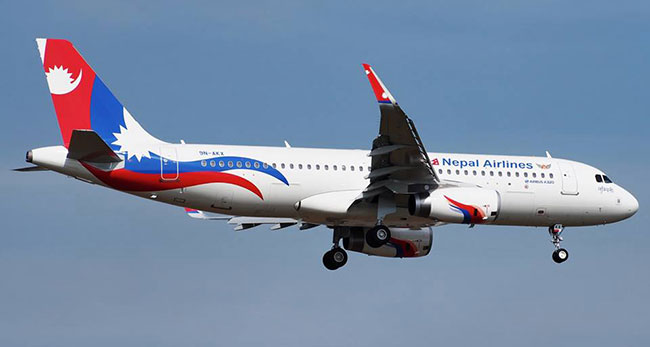
OR
While the 3,050-meter runway is adequate for smaller wide bodies, the length is not enough for takeoffs when these planes get heavy with fuel.
The deliberations on Nijgarh International Airport (NIA) began decades ago yet the project has not moved beyond the niceties on paper. Ironically, NIA itself appears to be on an uncertain hold, much like air traffic around Kathmandu it aims to do away with. This again shows that even projects with prestigious tags suffer from unforeseen delays on one pretext or another. Forget the mega-size airport with Rs 121 billion price tag, even the relatively small Tribhuvan International Airport (TIA) improvement project is held up. It is too early to say how Nijgarh will fare, both in terms of time and money, when actual construction starts.
Could the culprit be our overall lack of expertise in managing big projects, or is it due to benign/deliberate framing of contract documents liable to ambiguous interpretations? Further, as the rumor goes, the highest bidder often gets the project. Stopping low comes naturally thereafter as it looks to do just the “needful”. We can thus safely bet that no project will get done in earnest, let alone be completed on time before root causes are identified and rectified. But that will be tall order given the environment of impunity all around.
The new RNP approach has debunked the hype about the danger of using Kathmandu’s ‘only approach’.
As a theoretical exercise, this piece wonders if on-going projects could have been better envisioned with wider scope. This scribe can find no better example than Melamchi, as envisioned by Ratna Sansar Shrestha in 2008. The project could have generated 225 MW of electricity and helped irrigate 30,000 hectares, on top of supplying water to Kathmandu. For parched Kathmandu water was more important, in the immediate, than other ancillary benefits. The enlarged diameter (5m) tunnel would have allowed tapping of even waters of Balephi, ensuring even more waters for Kathmandu users.
Kilometer of safety
In a similar vein, this piece tries to stress the need to extend TIA runway, beyond the 300m to the south as currently proposed. While the current 3,050-meter RWY is adequate for smaller wide bodies like A330/B777, the length is not enough for takeoffs when these planes get heavier due to fuel. It would be an opportune time to add, whatever length necessary, to do away with the load penalty once and for all, as an increase of runway length by about 1,000 meter is a distinct possibility. As a by-product, it will also provide longer stoppage distance after rejected high-speed takeoffs. There have been such instances at TIA due to birds strike. A longer RWY may be costly in the short run but will make TIA safer. Thankfully and unlike Melamchi, the RWY length extension will continue to be a distinct possibility, with or without Nijgarh.

Some professionals had argued against runway extension as it would make the already critical VOR/DME approach even more complicated. With the touchdown threshold moved south, aircraft would end up getting uncomfortably close to the hills as they fly in. This was a valid argument until there was no alternative. We now have functioning satellite based RNP-AR approach since two years, and it is being increasingly used by more and more airlines, as it is safe and dependable. Notable non-RNP users include all Indian Airlines, Thai and, of course, Nepal Airlines (RA). Surprisingly, even Himalaya Airlines are appropriately equipped while RA’s A320s are not!
Second approach
This new approach utilizes V-shaped profile by channeling aircraft through the Bagmati track, which essentially means they have much lower but still safe approach altitude. It is not a straight-line path, unlike the earlier one; RNP has a flat meandering descending track. It begins at 8,700 ft altitude from a point called KT532 that lies about 2 nautical miles north of the waypoint of Guras. The RNP approach has debunked the hype associated with the danger of using Kathmandu’s ‘only approach’. TIA becomes reachable even for heavy long-haul flights only if the runway is extended to ensure maximum takeoff weight. This will be a feather on TIA’s cap, again with our without Nijgarh.
It is not about choosing between TIA and NIA; but why strangulate TIA while dreaming about NIA? As Melamchi has overrun completion deadline by few decades, we wonder how NIA will eventually fare. It will be another distant dream, with added uncertainty of fast-track construction as the Army is now involved. It is a general understanding that there is a limit to what an army can (or cannot) do. Designing and making a fast track is something totally different with other “non-fast-track” ventures.
It will be ideal if we, as citizens, are informed on how capable the engineering team of the army is on design aspects, first, and on construction later. The 115 km long Trivhuban Rajpath was also a sort of “fast-track” of the period and was built by the Core of Indian Army Engineers. It remains to be seen how different Nepal Army will prove to be on the crucial umbilical link to Nijgarh. One only hopes that it does not end up having hundreds of hairpin bends.
harjyal@yahoo.com
You May Like This

Exploring opportunities and Challenges of Increasing Online Transactions in Nepal
Recently, I embarked on an errand for my parents. Upon completing my purchases, I proceeded to the checkout. The cashier,... Read More...

Why Federalism has Become Risky for Nepalese Democracy
The question arises, do federal or unitary systems promote better social, political and economic outcomes? Within three broad policy areas—political... Read More...

Nepal's Forests in Flames: Echoes of Urgency and Hopeful Solutions
With the onset of the dry season, Nepal's forests undergo a transition from carbon sinks to carbon sources, emitting significant... Read More...

Just In
- Indians vote in the first phase of the world’s largest election as Modi seeks a third term
- Kushal Dixit selected for London Marathon
- Nepal faces Hong Kong today for ACC Emerging Teams Asia Cup
- 286 new industries registered in Nepal in first nine months of current FY, attracting Rs 165 billion investment
- UML's National Convention Representatives Council meeting today
- Gandaki Province CM assigns ministerial portfolios to Hari Bahadur Chuman and Deepak Manange
- 352 climbers obtain permits to ascend Mount Everest this season
- 16 candidates shortlisted for CEO position at Nepal Tourism Board







_20220508065243.jpg)










Leave A Comment